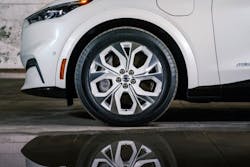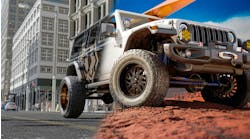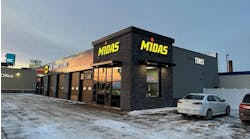This MTD exclusive was provided by Craig Van Batenburg, MTD's monthly EV Intelligence columnist and owner of Van Batenburg's Garage Inc. dba Automotive Career Development Center, which provides training for facilities that service - or want to service - electric and hybrid vehicles.
In 1999, the first Honda Insight gas/electric hybrid (HEV) was sold in America. It was the first hybrid in the United States. (Toyota had introduced the Prius in Japan a couple years earlier.)
Bridgestone Corp. was contracted by Toyota to design a low rolling resistance tire, even before the Prius came out, as Toyota was under a mandate from California to sell zero-emission vehicles since 1996. The Toyota RAV 4 was redesigned for that mandate and the tires on the sidewall were labeled “for electric vehicle (EV) use only.”
Later, Bridgestone designed and sold low rolling resistance tires for the launch of the 1998 Prius and the 2000 Insight. The Bridgestone tires for the Prius were the same construction as the Insight’s tires, but the Honda’s rim had a smaller width. It was a beginning. A lot of changes have happened since then.
Where are we now? Sales of EVs are booming. The term “low rolling resistance” is well-known. As you know, tires have a large effect on miles per gallon (MPG) and they also have a big impact on battery use, which I’ll cover in my next column.
Most drivers want a safe tire, one that lasts a long time and is fuel-efficient. When an EV or HEV rolls into your lot, do you suggest bolting on the original equipment (OE) tires that came standard on those vehicles or do you sell whatever you have in stock?
There are also plug-in hybrids (PHEV) that come into your stores every day. What do your service advisors sell them? What do they know about the customers’ buying motives? As I’ve noted in prior columns, you need to understand what motivates EV, HEV and PHEV owners before you can win their trust and sell to them.
What happens after your customer leaves your store with a new set of tires? That pesky dash read-out of instantaneous MPG tells the story. What will customers do if it drops? Did you sell the wrong tires? Is your front counter staff ready to engage in that conversation?
If you have new salespeople, make sure they thoroughly understand the features and bene!ts of the tires you carry so they can help suggest the correct tires to the vehicle owner. Make sure your salespeople are educated so they can make the best new tire recommendation.
Your salespeople also need to be aware of aftermarket vehicle modifications and how they can impact performance.
My company, the Automotive Career Development Center (ACDC), has been educating technicians about EV, HEV and PHEV service since 2000. We received a call from Barry Mounce, a shop owner in Arkansas, a while back. (ACDC had sponsored an HEV training class at his shop.)
One of Barry’s customers had bought a year 2000 five-speed standard shift Honda Insight on eBay and flew to Colorado to drive it back. On the return trip, the car drove OK, but had warning lights on the dash. The owner discovered that its fuel economy was lower than what other Insight drivers were getting.
Barry called ACDC for help. We asked for codes and pictures of the car, as ACDC had the same one. One picture explained it. The car had been modified with small rims and tires to drop it two inches closer to the ground. It looked cool, but the wheel speed sensors were spinning at a much higher rate than expected, so the vehicle’s regenerative function was turned off.
Barry bought four factory rims and tires and the car was fixed. Many people who modify their vehicles will sometimes run into problems they did not see coming when changing rims and tire sizes. As their trusted tire and wheel advisor, you will need to be ready for these possibilities.
Remember that whenever the driver of an EV, HEV or PHEV lifts their foot off the accelerator pedal, regenerative braking occurs. You do not need to have your foot on the brake to go into “regen” mode. Any loss of traction will take the vehicle out of regenerative braking — it will stop recharging the high-voltage battery — and go into hydraulic braking in case of an event that requires ABS.
The tires you sell and install on any HEV, PHEV or EV need to provide traction that’s as good or better than what the OE tire provides. The same goes for rolling resistance. The wrong tire can reduce an EV’s range. EVs are heavy, so weight is a factor, too.
Again, make sure your staff is “trained up” so they can provide the best possible tire recommendation for the customer’s vehicle.




